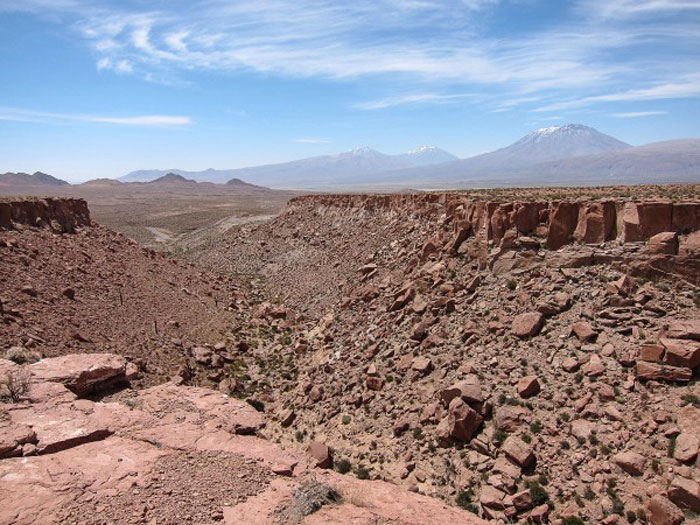.

Scientists studying river canyons in Chile found that wind erosion was a strong factor in their shape.
.
Ancient canyons scar the surface of Mars, a relic from a time billions of years ago when rivers flowed on its surface. But water may not be the only factor that shaped these canyons—the wind whipping through them could be just as important, according to a new study of river canyons on Earth. Scientists studying chasms in the Andes mountains in northeast Chile have found that wind carves some canyons 10 times faster than water. The discovery may be significant for understanding how much water flowed on the surface of ancient Mars.
“The rates at which valleys and canyons can be abraded by the wind has not been well understood, and I think that is where this paper makes a great contribution,” says planetary geologist Nathan Bridges of the Johns Hopkins University Applied Physics Laboratory in Laurel, Maryland.
Even on Earth, it is usually difficult to disentangle the wind’s effect on a canyon from that of water. But geologist Jonathan Perkins of the University of California, Santa Cruz, and colleagues found a perfect “natural experiment” to tease out each force’s role: 36 canyons in northeast Chile, clustered into two groups. The type of rock and the climate were similar for all the canyons, but the first group was exposed to strong wind, and the second was shielded by a mountain.
When researchers compared the two sets of canyons using satellite imagery, they found that the windswept canyons were longer, smoother, and had grown 10 times faster than the still canyons over the millions of years since the rock first formed, they report online today in Nature Geoscience. The windy canyons formed long gouges in the earth reminiscent of cat scratches, whereas the calmer canyons were stubby and shaped like amphitheaters. Apparently, abrasion caused by windblown sand had lengthened the canyons and polished out the kinks in their slopes.
The canyons lie at the edge of the Atacama Desert, where the extremely dry, windy climate provides optimal conditions for the formation of wind-scoured canyons. Sandblasting wind gusts could shape canyons on the similarly parched surface of Mars as well, the researchers point out. Martian winds have shifted sand dunes and scoured bedrock, but when it comes to Mars’s canyons, scientists have usually assumed that water was the dominant shaping force. The new study indicates this might not be the case.
On Mars, “it’s been dry for so long that the channels might have been modified by quite a lot” by wind, says geomorphologist Ken Ferrier of the Georgia Institute of Technology in Atlanta, who was not involved with the study. But if scientists have been discounting this effect, “our attempts to estimate how much water used to be flowing on Mars … might be pretty strongly biased,” he says. If wind has expanded the canyons of Mars, scientists might overestimate how much water once flowed there if they neglect the effect of wind.
Of course, Mars differs from Earth in its atmosphere, gravity, and type of rock, among other things, so more work is necessary to fully understand how those conditions might alter the wind’s ability to modify a canyon on that planet. “I don’t think it answers all the questions,” Bridges says, but the study still “provides us some good food for thought for trying to understand Mars.”
Quelle: AAAS
4736 Views
